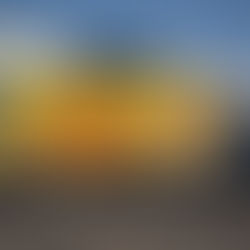Ruti de Vries
b. 1989, Tel Aviv; lives and works in Tel Aviv.
Ruti De Vries's artistic work over the years has progressed like a spiral that gathers more and more motifs and materials therein without abandoning those that preceded them. She draws inspiration from many traditions and sources, including ancient folk art and outsider art, the worlds of fashion, theater, and puppetry. Over the years she has built a rich lexicon of images, materials, themes, and meanings—like a personal cosmology in which distinctions between human and animal, feminine and masculine, organic and artificial are embedded.
De Vries's sculptures and collages are made of inexpensive materials, often recycled, such as plastic bags, shoelaces, cheap textiles, cardboard, plywood, tattered furniture, paper, sand, and leaves. The sculptures are nothing more than shells, short-lived taxidermies, hollow constructions. They usually inhabit stage environments where time seems to have frozen, locked in a still choreography of suspended gestures and emotions.
According to the artist, in the studio, actions can be quick and intuitive, or laborious. The variety of techniques she employs—from embroidery to computer animation—constitute "channels of action" for her, each with its own internal logic and rhythm. Sometimes she feels like a conduit, when she surrenders to the pulse dictated by the body, to the rhythm of the hands, trying to translate this bodily energy into the objects she creates, to infuse them with an immediacy and rawness that will strike the observer.
The handicrafts raise questions related to gender, labor, and artistic hierarchies, as well as the structures of kitsch, melodrama, and "bad taste". Decoration, patterns, symmetry, repetition—all distinct characteristics of handicraft—are frequently used in her works. Their encounter with sculpture elicits a nourishing tension between two-dimensionality and volume, between a graphic and a sculptural quality, between sign and presence.
According to de Vries: "While my works often create imaginary figures, the personal and the artistic are intertwined. Sometimes this connection becomes distinct, and sometimes it is more implicit, as a certain ambience that surrounds an exhibition. Therefore, each new exhibition is not only an aesthetic and thought-provoking challenge for me, but also an emotional challenge, an intense dialogue between the place where I exhibit and the emotional place where I am."
De Vries's painting on the truck originated in multiple small paper works she created during the same period, which she joined together to form one complete work. One side of the truck features an occurrence involving possibly female, possibly androgynous figures, producing a set of movements and colors, shifting between human representation and a shape that produces a symmetric pattern. Through the figures' decorative body movements, one may notice that each one has a role within the resulting system; they hold each other and stream lines into one another.
On the other side of the truck there is a system with very similar rules. It also contains a large nucleus, like a generator of shapes that sends energy from the center of the truck to the figures on the side, which carry receptacles on their heads. Eyes peek from both paintings, looking straight ahead, transforming the truck into a living, human entity, as it were.
Holds a B.Ed in education and fine arts from the Midrasha School of Art, Beit Berl Academic College (2012), and an MFA from Bezalel Academy of Arts and Design (2015). She has had solo exhibitions at the Herzliya Artists' Residence; HaKibbutz Art Gallery, Tel Aviv; The Art Gallery, Kibbutz Sha'ar Ha'amakim; Studio Pram, Prague; The Cité internationale des arts Artist Gallery, Paris; and Schimmel Projects, Dresden; and participated in group exhibitions at Tel Aviv Museum of Art; Herzliya Museum of Contemporary Art, Herzliya, Israel; Bat Yam Museum, Bat Yam , Israel; Janco-Dada Museum, Ein Hod, Israel; Petach Tikva Museum of Art, Petach Tikva, Israel; The 6th National Drawing Biennale, Jerusalem; Art Week, Krakow and Warsaw. Her works are in the collection of Tel Aviv Museum of Art and in private collections. Recipient of the 2016 Israeli Ministry of Culture and Sports Young Artist Prize, and grants from the Yehoshua Rabinovich Foundation for the Arts and the Israeli Lottery Council for Culture and Art. Attended residency programs at the Cité internationale des arts, Paris; Brno Air, Czech Republic; Prám, Prague; and the Career Development Program Workshop by Asylum Arts, New York in collaboration with Artist and Artport, Tel Aviv. Lectures at Musrara—The Naggar Multidisciplinary School of Art and Society, Jerusalem, and works as a designer.





























